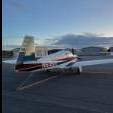Is my Mooney slow?
-
Members Online
- Hank
- XB-ABS
- Tim Jodice
- Marc_B
- 00-Negative
- 7.Mooney.Driver.0
- johnwheeler
- TangoTango
- skyfarer
- cliffy
- 47U
- N201MKTurbo
- PeteMc
- EricJ
- ta2too
- Rmnpilot
- Cfidave
- Joe Hood
- BaldEagle
- Bolter
- Nico1
- tcal780
- donkaye, MCFI
- NickG
- PeytonM
- Graf_Aviator
- neilpilot
- Robert Hicks
- Mufflerbearing
- TheAv8r
- midlifeflyer
- kortopates
- WilliamR
- StevenF
- hazek
- Wingfree
- rklems


Recommended Posts